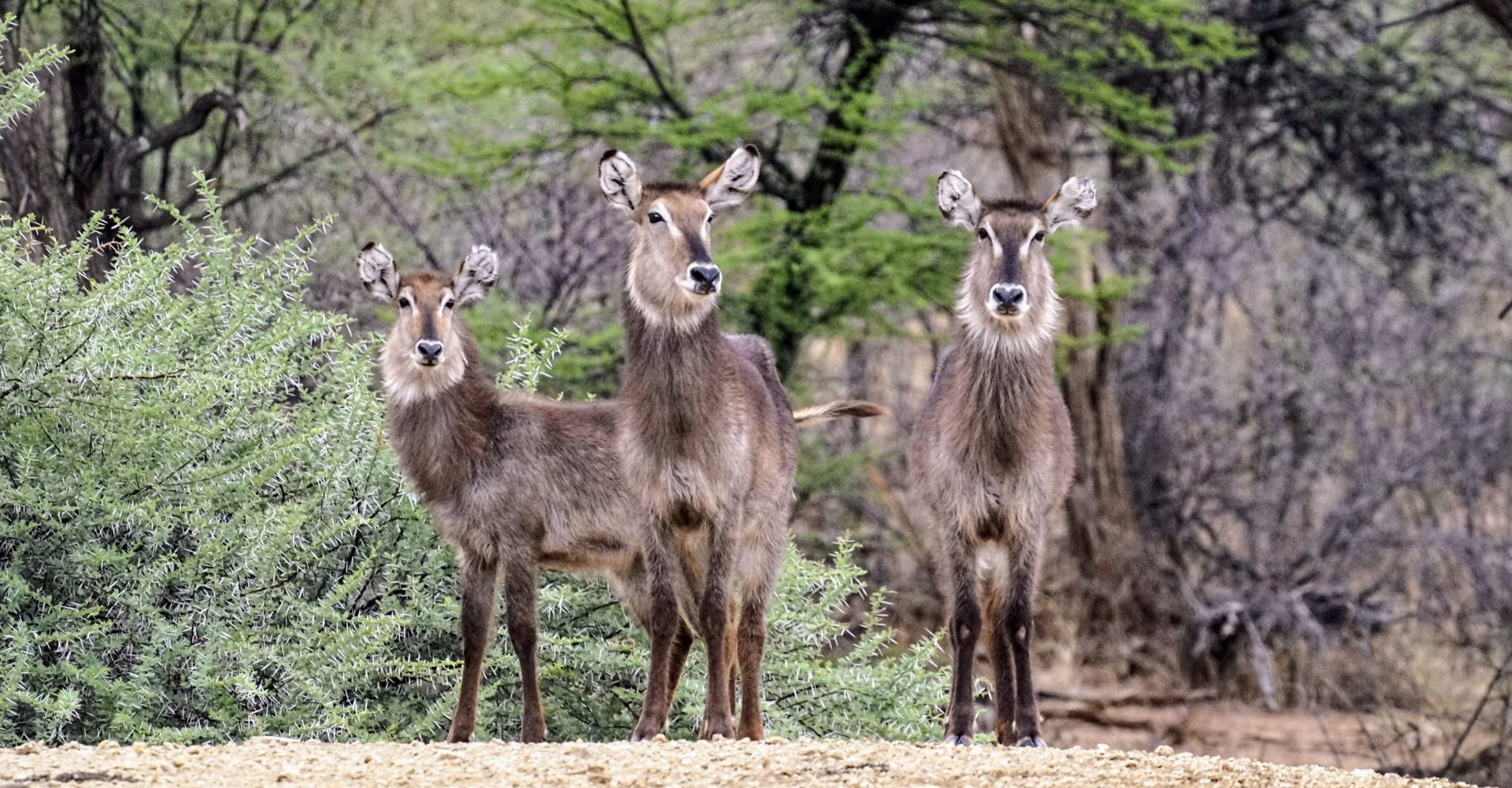The Elliptical Waterbuck (Kobus ellipsiprymnus), often referred to simply as the Waterbuck, is a robust and imposing antelope native to the vast expanses of sub-Saharan Africa. These animals, easily identified by their shaggy coat and distinctive white elliptical ring on their rump, derive their name from their preferred habitat – areas near waterholes, rivers, lakes, or even swamps. Although they are proficient swimmers, Waterbucks typically remain close to shallow waters, where they can retreat to safety from predators like lions and leopards.
Shaggy & Social
Waterbuck
GUIDE KNOWLEDGE: WATERBUCK
Waterbucks are social creatures that usually form herds of 6 to 30 animals, though in protected areas with fewer predators, larger groups can be observed. These herds are segregated by gender, with females and their young forming one group, while mature males band together in bachelor groups. Older males often live solitary lives, fiercely defending their territories with aggressive displays and battles against rivals. Non-territorial males either remain solitary or join bachelor herds, interacting with the main herd only during the mating season.
Although Waterbucks can breed throughout the year, their reproductive cycle is closely linked to the rainy season, ensuring that calves are born when food is abundant. Following a gestation period of around 8 to 9 months, a single calf is typically born. Like many antelopes, Waterbucks hide their young in tall grass and shrubs during the first few weeks of life to protect them from predators. The mother visits the hidden calf several times a day to nurse it, and only after about four weeks, when the calf is strong and agile, does it rejoin the herd.




